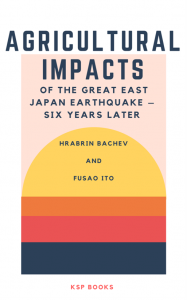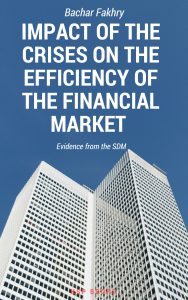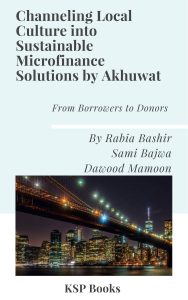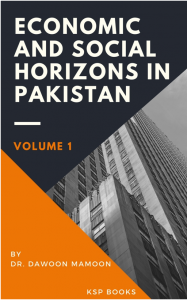Synopsis
(Ch.1) The objective of this paper is to determine the gender wage gap in the informal sector in Togo. To do so, the method of decomposition of the refocused influence function (RIF) was applied to data from the integrated regional survey on employment and the informal sector (ERI-ESI) in WAEMU member states carried out by the National Institute of Statistics and Economic and Demographic Studies (INSEED) in Togo (2019). The results reveal that men are better paid than women throughout the wage distribution. This gender wage gap is mainly due to differences in performance associated with productive characteristics. In addition, discrimination against women has increased in the low and medium quantiles, i.e. it has affected the poorest disproportionately. These results imply that in order to effectively combat the wage gap in the informal market in Togo, emphasis must be placed on those factors that explain the wage difference, namely education, experience and sector of activity.
(Ch.2) The paper seeks to examine the way subsistence housing has become a challenge to Dar es Salaam city’s competitiveness. A literature review and conducting interviews were the methods used to collect data. Findings indicate that there is large quantity of subsistence housing in Dar es Salaam. The situation has reduced the high degree of urban competitiveness in a number of ways, which include increased productivity, improvement of the life of its citizens, as well as providing higher quality of social services. The paper argues for the improvement of subsistence housing by involving central and local governments, private sector, civil society organizations, the community and the international organizations to work in partnershipin order to increase the city’s competitiveness.
(Ch.3) Over estimation and under estimation of the Personal Income Tax (PIT) revenue results in an unstable economy and unreliable statistics in the public domain. This study aimsto find a suitable SARIMA and Holt–Winters model that suits the sample monthly data for PIT well enough, from which a forecast can be generated. This study uses the aspects of time series model (Holt–Winters and SARIMA) and regression models with SARIMA errors to simulate the structure which followed the historical actual realization of PIT. The quarterly data were obtained from quarter1, 2009 to quarter 1, 2017 for the purpose of modeling and forecasting. The data were divided into training (quarter 1, 1995 to quarter 1, 2014) and testing (quarter 2, 2014 to quarter 1, 2017) data sets. The forecast from quarter 2, 2017 to quarter 1, 2020 were also derived and aggregated to annual forecast. Holt–Winters, SARIMA and Time Series Regression models fitted captured the movement of the historical PIT data with higher precession. The generated forecast is recommended to avoid several model revisions when locating the actual PIT realisation. However, monitoring of this model is crucial as the prediction power deteriorate in a long run. The study recommends the use of these methods for forecasting future PIT payments because they are precise and unbiased when forecasting are made. This will assist the South African authorities in decision making for future PIT revenue.
(Ch.4) The unprecedented demographic growth coupled with high rates of unemployment has led to the increased rate of farming activities on the Western slopes of the Manengouba Mountain. The shift from local livestock rearing and shifting cultivation of Cocoyams production to intensivo- extensive cropping of tomatoes, Irish potatoes, lettuce, huckleberry, cabbages and carrots, shows spatial signatures on space colonization in the Eboga caldera of the Manengouba Mountain and its environs. This hypothesis was tested through a multi- disciplinary and systematic approach; wherein, primary and secondary data were collected on the field later treated. This article brings out the trends or traits around this mountain, propose ways in which sustainable farming practices can be carried out so as to reduce soil erosion and pollution as well as methods to increase productivity so as to supply areas within and beyond the confines of the production basin.
(Ch.5) This chapter estimates the size and development of the South African shadow economy (SE) using two indirect approaches namely, the Multivariate Indicator Multivariate Causes (MIMIC) model and the Currency Demand Approach (CDA). The study uses time series from 2000 to 2019 (using quarterly data) to estimate the SE of South Africa for the period 2004 to 2018. The average estimated size of the SE from the CDA and MIMIC model are 22.47% and 25.45% respectively. Overall, the MIMIC and CDA models are both showing a slight decreasing trend for the same period. The study recommends further analysis to be conducted on economic segments in order to explore the SE activity distribution between different economic sectors; resulting in an easier way to identify, locate and monitor unrecorded businesses and also increase revenue collections and minimise non-compliance for different sectors.
(Ch.6) The performance and the efficiency of a business are related to the decision-making process, which requires a considerable amount of up-to-date, relevant and high-quality data, information and knowledge. In this context, learning is considered to be a process of acquiring knowledge, and can be simulated using artificial neural networks. The application of artificial intelligence in the decision-making process within a company enables decision-makers to analyze and process knowledge and data external or internal to the company in order to make a better decision considered optimal. This paper uses a model based on the multilayer perceptron neuron network to predict the nature of the decision. A batch learning algorithm is used as a tool for the selection of the most relevant factors in the decision-making process. The results demonstrate the relevance of the neural approach with an offline algorithm in this area of research. On a sample of 200 decision-makers, the model predicted the nature of the decision with a correct classification rate equal to 84.2%. This model enabled us to determine the optimal combination of factors that help to reach a good predictive performance of the nature of decision.
Contents
About the Editor(s)
ISBN
978-605-7736-56-7
Date of Publication
June 15, 2020
File Size: 4266 KB
Length: xxii + 154 pages
This work is licensed under a Creative Commons Attribution 4.0 International License.
















